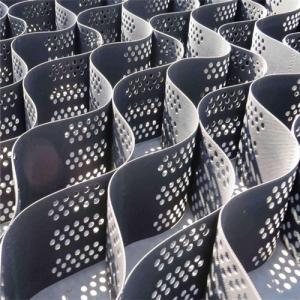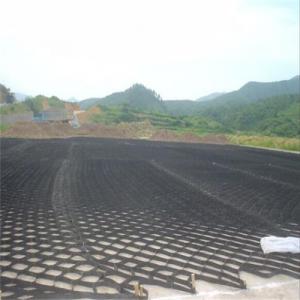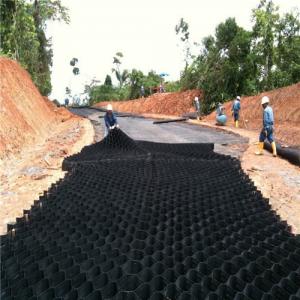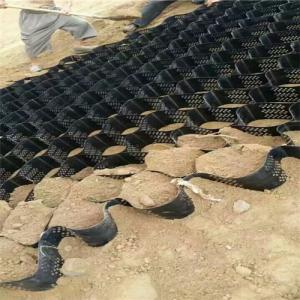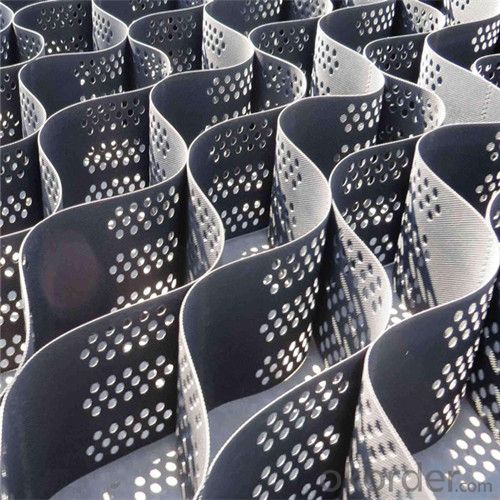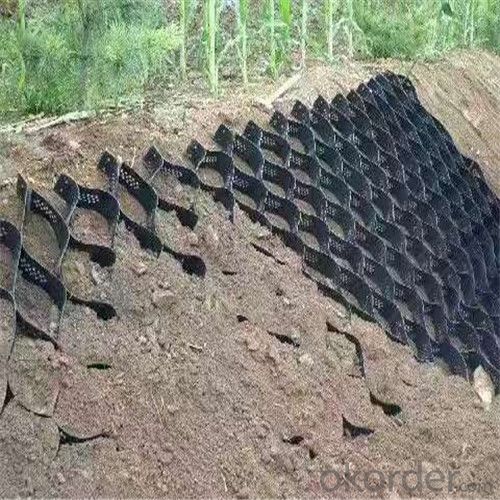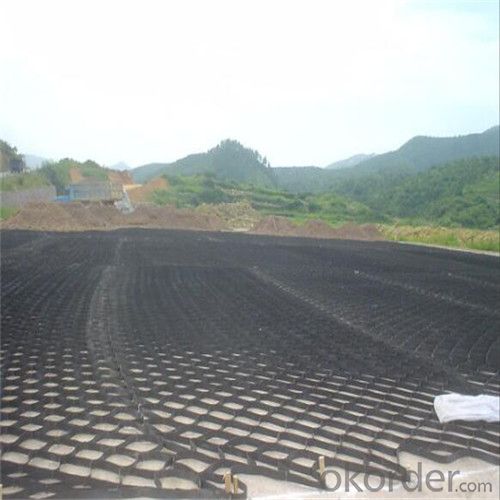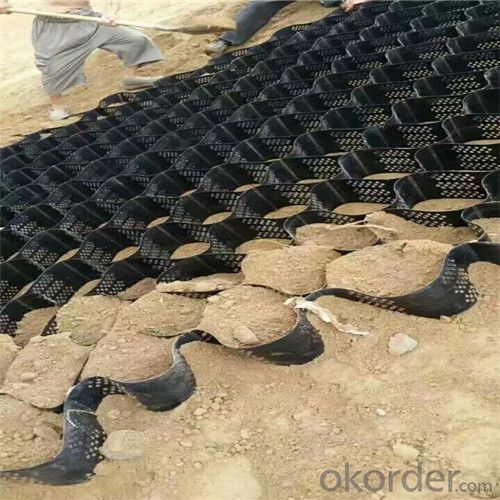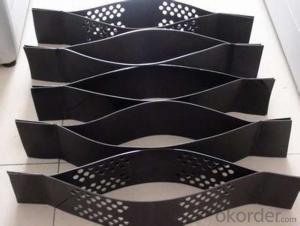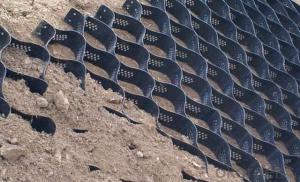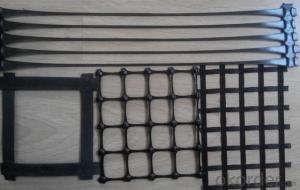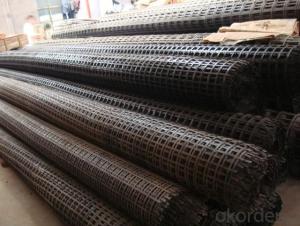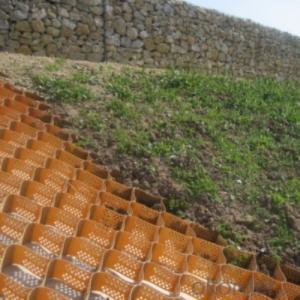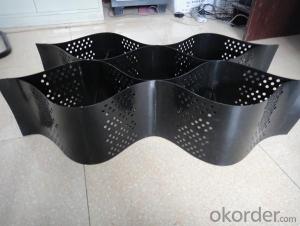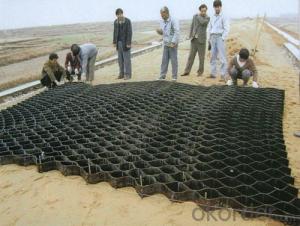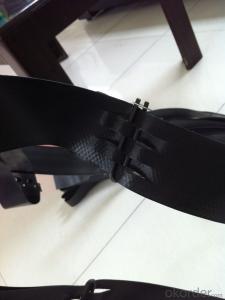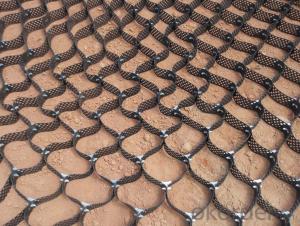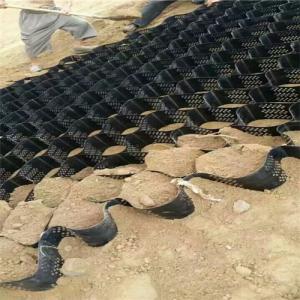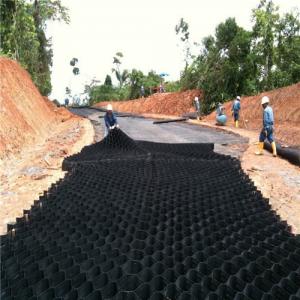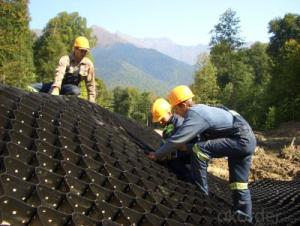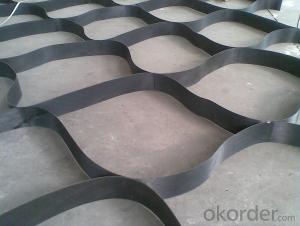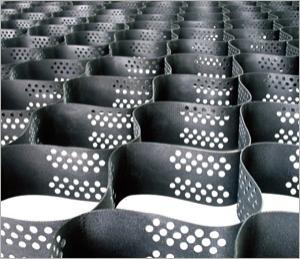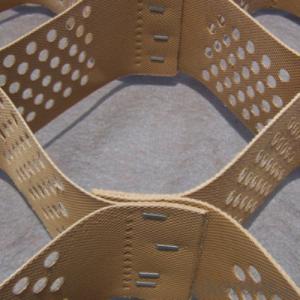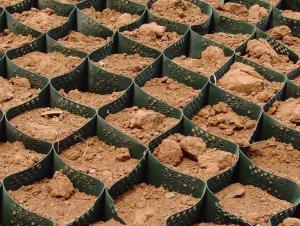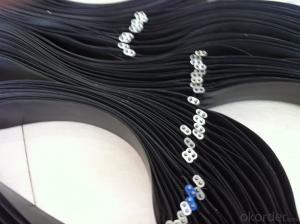HDPE Geocell for Retaining Wall and Reinforcement
- Loading Port:
- Qingdao
- Payment Terms:
- TT or LC
- Min Order Qty:
- 5000 m²
- Supply Capability:
- 100000 m²/month
OKorder Service Pledge
OKorder Financial Service
You Might Also Like
Geocell Description
Geocell is high-molecular polymer, connected by rivets or ultrasonic welded to three-dimensional network structure, unfold it and fill in sand, gravel and clay, etc. when used at construction site.
According to customer’s requirement, cut holes or carve arabesquitic in order to increase its lateral permeable ability, also increase the friction and binding force with the foundation material.
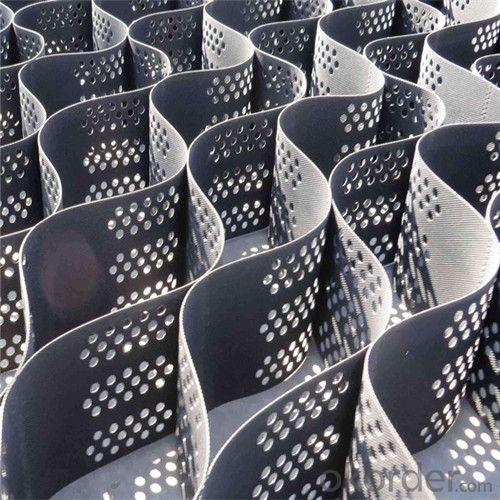
Geocell Specification
Welding distance:330-1000mm
Height:50-250mm
Surface: Textured or Smooth
Color: black,brown,green
Geocell Property:
1) Retractile, foldable when transportation, pulled to net work when construction, fill in the soil, gravel, concrete, atc. Loose materials,
form one structure with strong lateral limitations and high stiffness.
2) Material is light, abrasion resistance, chemical properties stable, resist photooxidation aging, acid and alkali resistant, suitable for different soil and soil conditions, such as desert.
3) Good lateral restrict and prevent slippery, prevent deformation, effectively enhance the bearing capacity of subgrade and dispersed
loads function.
4) The geocell height and welding distance etc. geometric dimensions are all changeable in order to meet the requirement of different projects.
5) Capable and easily be expanded or contracted, small size for transportation, easy for connect and construction speed is fast.
Geocell Application
1) Used for the stability of railway road.
2) To stabilize the desert highway road.
3) Used in the governance of shallow water channel.
4) Used for the foundation reinforcement of retaining wall, wharf, levee.
5) For the management of desert, beaches and river banks
FAQ:
- Q: What can we do for the special customer?
A: Provide custom made service with customer's drawing; We make sure to provide you with the best solutions for your individual case. Whether standard items or non-standard items.
- Q: What can we supply?
A: We provide high levels of communication from start to finish.
- Q: What is our advantage?
A: Top Cemented Carbide has extensive business experience, Fast delivery and high quality.
- Q: Can geocells be used for earthquake-induced soil stabilization?
- Yes, geocells can be used for earthquake-induced soil stabilization. Geocells are three-dimensional cellular confinement systems made of interconnected cells filled with soil, gravel, or other materials. These structures can be deployed to reinforce and stabilize soil, providing improved resistance against seismic forces during an earthquake. The geocells help distribute and dissipate the energy generated by the earthquake, reducing the potential for soil liquefaction and ground settlement. Overall, geocells are an effective solution for enhancing soil stability in earthquake-prone areas.
- Q: Do geocells require a specific installation technique?
- Yes, geocells do require a specific installation technique. The installation process involves preparing the site, placing the geocells in the desired shape, connecting the panels, filling them with appropriate infill material, and compacting the cells to ensure stability.
- Q: How do geocells help with erosion protection?
- Geocells help with erosion protection by providing a stable and reinforced structure that prevents soil erosion. The interconnected cells, made from high-density polyethylene, are filled with soil or aggregate material, creating a rigid matrix. This matrix effectively confines the infill material, preventing it from being washed away by water flow or eroded by wind. Geocells also promote vegetation growth, further enhancing erosion control by stabilizing the soil and reducing surface runoff.
- Q: Can geocells be used in railway construction?
- Yes, geocells can be used in railway construction. Geocells are a type of cellular confinement system that can be filled with various materials such as soil or aggregate to create a stable base or foundation. They can be utilized in railway construction to improve load distribution, enhance track stability, and prevent soil erosion.
- Q: Can geocells be used in wetland protection projects?
- Yes, geocells can be used in wetland protection projects. Geocells, which are three-dimensional cellular confinement systems, provide effective erosion control and stabilization in various environments, including wetlands. They can be filled with suitable materials like soil or vegetation, creating a stable surface that helps prevent soil erosion and enhance vegetation growth in wetland areas. Additionally, geocells can assist in creating channels and structures for stormwater management and habitat restoration in wetland protection projects.
- Q: How do geocells improve water drainage?
- Geocells improve water drainage by creating a structured and stable platform that allows water to flow freely through the cell walls. The interconnected cells provide channels for water to pass, preventing the formation of puddles or stagnant water. Additionally, the geocell's permeable material allows water to seep into the ground, promoting groundwater recharge and reducing the risk of surface runoff.
- Q: How do geocells improve the stability of bridge approach embankments?
- Geocells improve the stability of bridge approach embankments by confining and reinforcing the soil, preventing lateral spreading and erosion, and distributing loads more evenly. This results in increased bearing capacity, reduced settlement, and enhanced overall stability of the embankment.
- Q: Are geocells resistant to UV degradation?
- Yes, geocells are designed to be resistant to UV degradation. They are typically made from high-density polyethylene (HDPE) which has excellent UV resistance properties, allowing them to withstand prolonged exposure to sunlight without significant degradation.
- Q: What is the difference between geocells and geogrids?
- Geocells and geogrids are both geosynthetic materials used in civil engineering for soil stabilization and reinforcement. However, the main difference between them lies in their structure and application. Geocells are three-dimensional honeycomb-shaped structures made of high-density polyethylene (HDPE) or other similar materials. They are typically used for soil confinement, erosion control, and slope stabilization. Geocells provide a stable framework that helps to distribute loads and prevent soil movement, while also promoting vegetation growth. They are commonly used in road construction, retaining walls, and landfills. On the other hand, geogrids are two-dimensional materials made of high-strength polymers, such as polyester or polypropylene, with a grid-like structure. Geogrids are primarily used for soil reinforcement and improving bearing capacity. They are often placed within soil layers to enhance their tensile strength and prevent the spread of cracks. Geogrids are commonly used in retaining walls, embankments, and road pavements. In summary, geocells are three-dimensional structures used for confinement and erosion control, while geogrids are two-dimensional materials used for soil reinforcement and improving bearing capacity.
- Q: Can geocells be used for pipeline protection?
- Yes, geocells can be used for pipeline protection. Geocells are three-dimensional cellular confinement systems made from interconnected polymeric strips or sheets. They can be filled with soil or other granular materials to create a stable and protective layer around pipelines. The geocells provide added reinforcement and stability, protecting the pipeline from external forces such as soil erosion, ground movement, or heavy loads. They also help distribute the load evenly, reducing the chances of damage or failure.
Send your message to us
HDPE Geocell for Retaining Wall and Reinforcement
- Loading Port:
- Qingdao
- Payment Terms:
- TT or LC
- Min Order Qty:
- 5000 m²
- Supply Capability:
- 100000 m²/month
OKorder Service Pledge
OKorder Financial Service
Similar products
Hot products
Hot Searches
Related keywords
